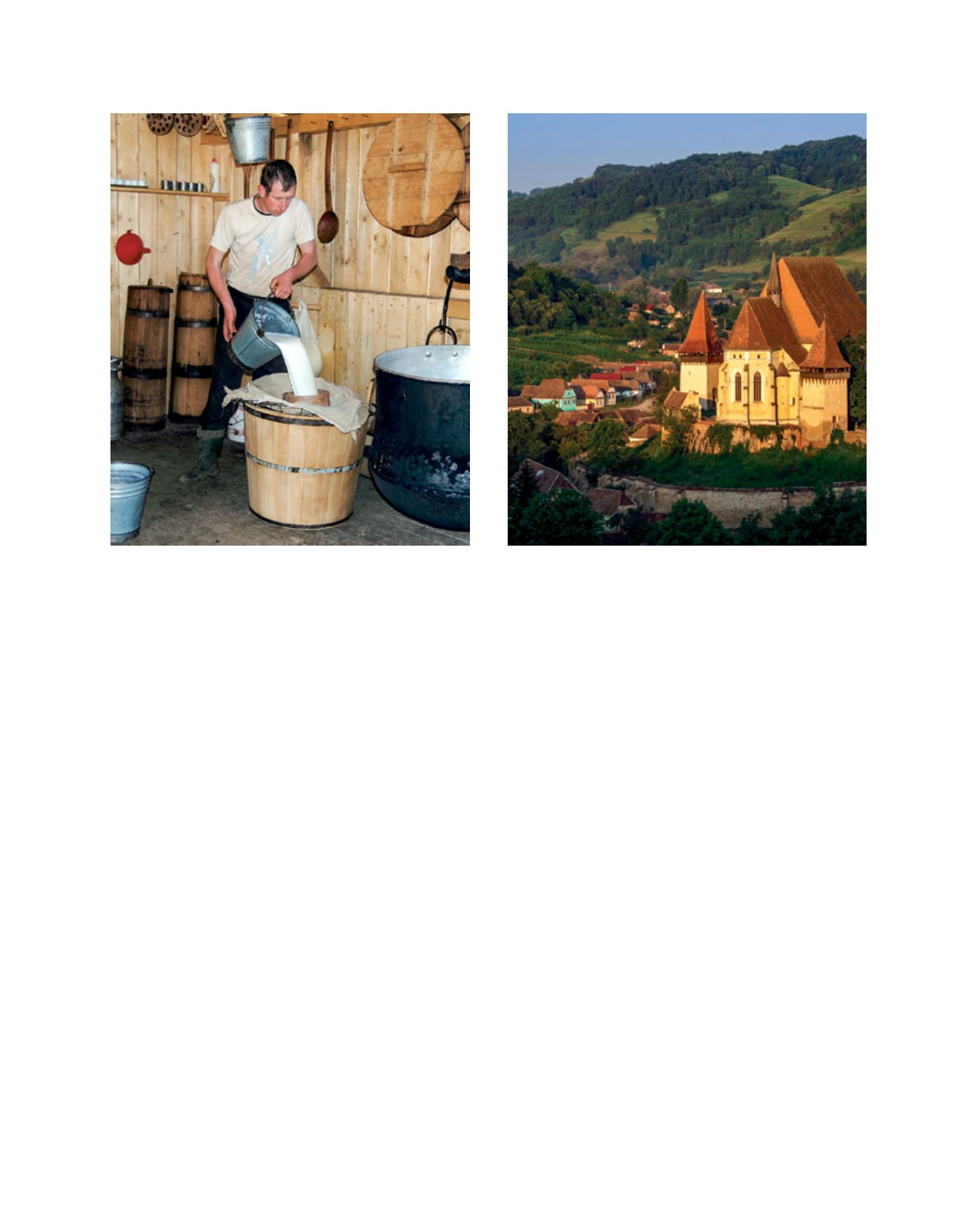

[
] 156
Romania’s family farms are centred in villages and commu-
nities. The traditional farmhouses and courtyards are gathered
into villages. Crops are grown on the arable valley floors, and
the valley slopes are given over to hay meadows and large
expanses of communal grazing land for both sheep and cattle,
which are managed separately.
The typical family farm consists of a farmhouse, barns and
sheds for cattle, sheep, pigs, chickens and hay; a vegeta-
ble patch for household use, and an apple, plum and pear
orchard. Family farmland is usually divided into small
parcels of arable land and hay meadow, often no more than
0.3 hectares in size, near the village. Further from the village
are the common grazing pastures and forests which are a
source of wood for cooking and heating.
In order to ensure the viability of Romania’s farms and
since their majority is small, we had to target our support
tools in their direction. We found that by supporting
family farms, not only did we solve social issues related to
unemployment, but we are also able to connect the people
working in production to market tools. Not to mention that
they were able to standardize their production so they could
sell it on the European (international) market as well. Great
importance was given to the diversification of production, in
order to ensure their revenues all year round.
Three main priorities were identified in order to better
support family farms:
• promoting the family farm as a sustainable, inclusive
growth model
• creating an institutional framework to implement
support measures
• including family farms in the food supply chain.
We are supporting over 60,000 small farms with a total of almost
€400 million. We have created a tool to help family farms gain
access to bank credits, given the fact that banks are still reluc-
tant to support a field such as agriculture, which is associated
with great risks. The 2007-2013 Rural Development Programme
supported young farmers, encouraging them to stay in the rural
area and to secure themselves a decent life. The programme
entailed almost 13,000 projects, at a total of €326 million.
Based on our experience, only by continuing to give incen-
tives for small farms can we achieve viable development in
rural areas and a healthy economy. The effects of this support
will be seen long-term; not only will people learn to connect
to the market, use better technologies, educate themselves
better and protect the environment, but the communities as
a whole will keep their traditions and will be able to flourish.
Sustainability of family farms can be ensured only if they
are supported in various forms on a long-term basis, providing
advice on the application of environmentally friendly technolo-
gies and maintaining local traditions of animal husbandry and
farming. Thus, it is necessary to identify more accurate specific
needs of family farms and provide a package of measures with
regard to both agricultural and non-agricultural specificities for
these farms to develop both at national and community level.
In February 2014, in Paris, together with my fellow Ministers
of Agriculture from 20 countries, we confirmed our desire to
participate fully in the International Year of Family Farming,
proclaimed by the United Nations General Assembly. We also
commit through our public policies to creating a favourable envi-
ronment and allowing family farming to contribute to inclusive
sustainable development of our countries, adapting our develop-
ment paradigms to the specificity of our land and people.
Family farms can fulfil the demand for better, healthier locally produced food
Increasing numbers of visitors are attracted to Romania’s remote villages
Image: Ministry of Agriculture and Rural Development of Romania
Image: Ministry of Agriculture and Rural Development of Romania
D
eep
R
oots
















